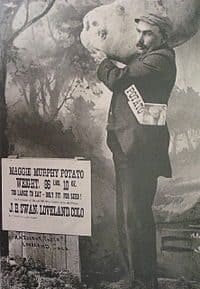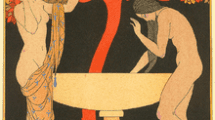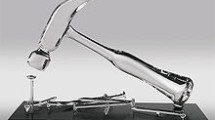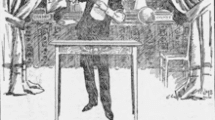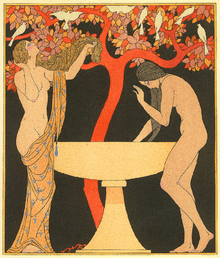The widely circulated image of Joseph B. Swan holding the supposed potato.
The Maggie Murphy hoax was a hoax perpetrated in 1895 by W. L. Thorndyke. He created an image that depicted farmer Joseph B. Swan holding what appeared to be a giant potato. The photo rapidly spread around the United States, and appeared in a panel of Ripley’s Believe It or Not!.
Background[edit]
The hoax began in Loveland, Colorado. W. L. Thorndyke, editor-in-chief for a local newspaper, had wanted to promote an upcoming street fair. Thorndyke turned to farmer Joseph B. Swan, and wanted to help bring customers to him.[1] Swan had been known for growing more than 70 different types of potatoes and had previously been featured in several news reports for his success with his crop.[2]
With the help of local photographer Adam Talbot, they produced a photograph which appeared in an 1895 issue of the Loveland Reporter.[1] It was implied the potato weighed 86 pounds 10 ounces, and measured 2 feet 5 inches.[3] Swan swore that he grew it himself.[4] The image quickly spread around the United States. Over one thousand citizens sent letters to Thorndyke, requesting pieces of Maggie Murphy so they could grow their own oversized potato.[2] Requests for seeds were also common.[1] Thorndyke, realizing that the photograph was beginning to get out of control, admitted that it was a hoax. He wrote that he had asked Swan to carve a fake potato out of wood.[4]
Cultural impact[edit]
The photograph appeared in numerous publications, including Scientific American and Ripley’s Believe It or Not!.[2] It has been reprinted in the book The World of Ripley’s Believe It Or Not!, however, no mention is made of the photograph being a hoax.[3] When Ripley’s Believe It or Not! was adapted into a television series, the photograph was used in the opening segment.[2] In 2012, Colorado playwright Rick Padden adapted the tale of the hoax into a two-act play, entitled The Great Loveland Potato Hoax.[1]
References[edit]

